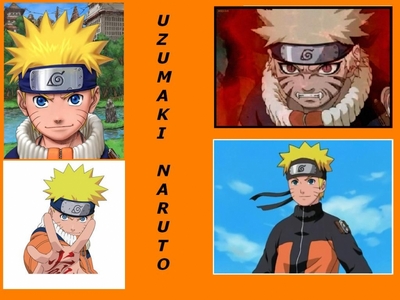A Web search engine is a tool designed to search for information on the World Wide Web. The search results are usually presented in a list and are commonly called hits. The information may consist of web pages, images, information and other types of files. Some search engines also mine data available in newsbooks, databases, or open directories. Unlike Web directories, which are maintained by human editors, search engines operate algorithmically or are a mixture of algorithmic and human input.
There are many search engine exist right now..3 of them are the lycos,Altavista and the Hotbot..
The 1st search engine is the Lycos.......
Lycos is one of the oldest (est. 1995) and most widely known Internet brands in the world, evolving from one of the original search engines on the web, into a comprehensive network of sites that foster online communities.
The Lycos Network provides web search and navigation, homepage building and web hosting services, web-based e-mail, online games and cutting-edge video platforms. Lycos's award-winning products and services include tools for blogging, web publishing and hosting, video sharing, social networking, games, e-mail, and search. Lycos is an Internet web portal.
The Lycos search engine allows you to search the Web for sites, sounds, images, and also by subject category. The search engine also allows an advanced customizable search feature, top news, top 5% sites, point review, a city guide, people finder, and road maps.Lycos began as a search engine research project by Dr. Michael Loren Mauldin of Carnegie Mellon University in 1994. Bob Davis joined the company as its CEO and first employee in 1995. Lycos then enjoyed several years of growth and, in 1999, became the most visited online destination in the world, with a global presence in more than 40 countries. Lycos was sold to Terra Networks of Spain in May 2000 for $5.4 billion, forming a new company Terra Lycos and maintaining a position as one of the world's largest Internet companies. Shortly after the merger, Davis left the company to become a venture capitalist with Highland Capital Partners in Boston. In October 2004, Lycos was sold by Terra's parent company Telefonica to Daum Communications Corporation, the second largest Internet portal in Korea, becoming once again Lycos Inc.Unlike many of its competitors, Lycos People Search lets you search for both individuals and businesses at one place. This naturally saves time and effort on your part.Lycos People Search is not at all complicated to use, making it especially appealing for people too busy to have time for initial query pages that require you to type a lot of information before you can proceed to the next step. It is also good for people with little experience with online tools.Lycos may have been one of the top search engines a decade ago, but its glory days are long past. Now, its size is just a tiny part of what competitors like Yahoo and Google have involved into. Ultimately, the efficiency of Lycos People Search will greatly depend on Lycos' marketing strategy and its ability to continuously offer services that Yahoo and Google can't.
The 2nd search engine is the ALTAVISTA..
AltaVista was created by researchers at Digital Equipment Corporation's Western Research Laboratory who were trying to provide services to make finding files on the public network easier. Although there is some dispute about who was responsible for the original idea two key participants were Louis Monier, who wrote the crawler, and Michael Burrows, who wrote the indexer. The name AltaVista was chosen in relation to the surroundings of their company at Palo Alto. AltaVista was publicly launched as an internet search engine on 15 December 1995 at altavista.digital.com.
At launch, the service had two innovations which set it ahead of the other search engines. It used a fast, multi-threaded crawler (Scooter) which could cover a lot more Web pages than were believed to exist at the time and an efficient search back-end running on advanced hardware. As of 1998, it used 20 multi-processor machines using DEC's 64-bit Alpha processor. Together, the back-end machines had 130 GB of RAM, 500 GB of hard disk space, and received 13 million queries per day. This made AltaVista the first searchable, full-text database of a large part of the World Wide Web. The distinguishing feature of AltaVista was its minimalistic interface compared with other search engines of the time; a feature which was lost when it became a portal, but was regained when it refocused its efforts on its search function.
AltaVista's site was an immediate success. Traffic increased steadily from 300,000 hits on the first day to more than 80 million hits a day two years later. The ability to search the web, and AltaVista's service in particular, became the subject of numerous articles and even some books. AltaVista itself became one of the top destinations on the web, and by 1997 would earn US$50 million in sponsorship revenue.
In 1996, AltaVista became the exclusive provider of search results for Yahoo!. In 1998, Digital was sold to Compaq and in 1999, Compaq relaunched AltaVista as a web portal, hoping to compete with Yahoo!. Under CEO Rod Schrock, AltaVista abandoned its streamlined search page and focused on features like shopping and free email.[8] In June 1998, Compaq paid AltaVista Technology Incorporated ("ATI") $3.3 million for the domain name altavista.com – Jack Marshall, cofounder of ATI, had registered the name in 1994.
In June 1999, Compaq sold a majority stake in AltaVista to CMGI, an internet investment company. CMGI filed for an initial public offering for AltaVista to take place in April 2000, but as the internet bubble collapsed, the IPO was cancelled.Meanwhile, it became clear that AltaVista's portal strategy was unsuccessful, and the search service began losing market share, especially to Google. After a series of layoffs and several management changes, AltaVista gradually shed its portal features and refocused on search. By 2002, AltaVista had improved the quality and freshness of its results and redesigned its user interface.
In February 2003, AltaVista was bought by Overture Services, Inc.[12] In July 2003, Overture itself was taken over by Yahoo!.AltaVista provides a free translation service, branded Babel Fish, which automatically translates text between several languages. In May 2008, this service was renamed Yahoo! Babel Fish, after the parent company.
The Site contains links to web sites, web pages and services that are also operated by AltaVista, our subsidiaries or other companies affiliated with us (each an "AltaVista Site"). Your use of each AltaVista Site is subject to the terms of use, if any, contained within each of the AltaVista Sites. If there is any conflict between the Terms set forth below and any of the terms or notices set forth on any other AltaVista Site, then the terms at that AltaVista Site will control your use of that AltaVista Site. Please review the terms of use for each AltaVista Site so that you understand all of the terms that will apply.
AltaVista is pleased to give you access to this Site free of charge. However, in order to access the Site, you will need to establish an account with an internet service provider. You will also need equipment to access the Site, including a computer, modem or other communication device. You agree to pay for all hardware and services costs needed to access the Site and use the Services. AltaVista is not responsible for any of these costs.


































No comments:
Post a Comment